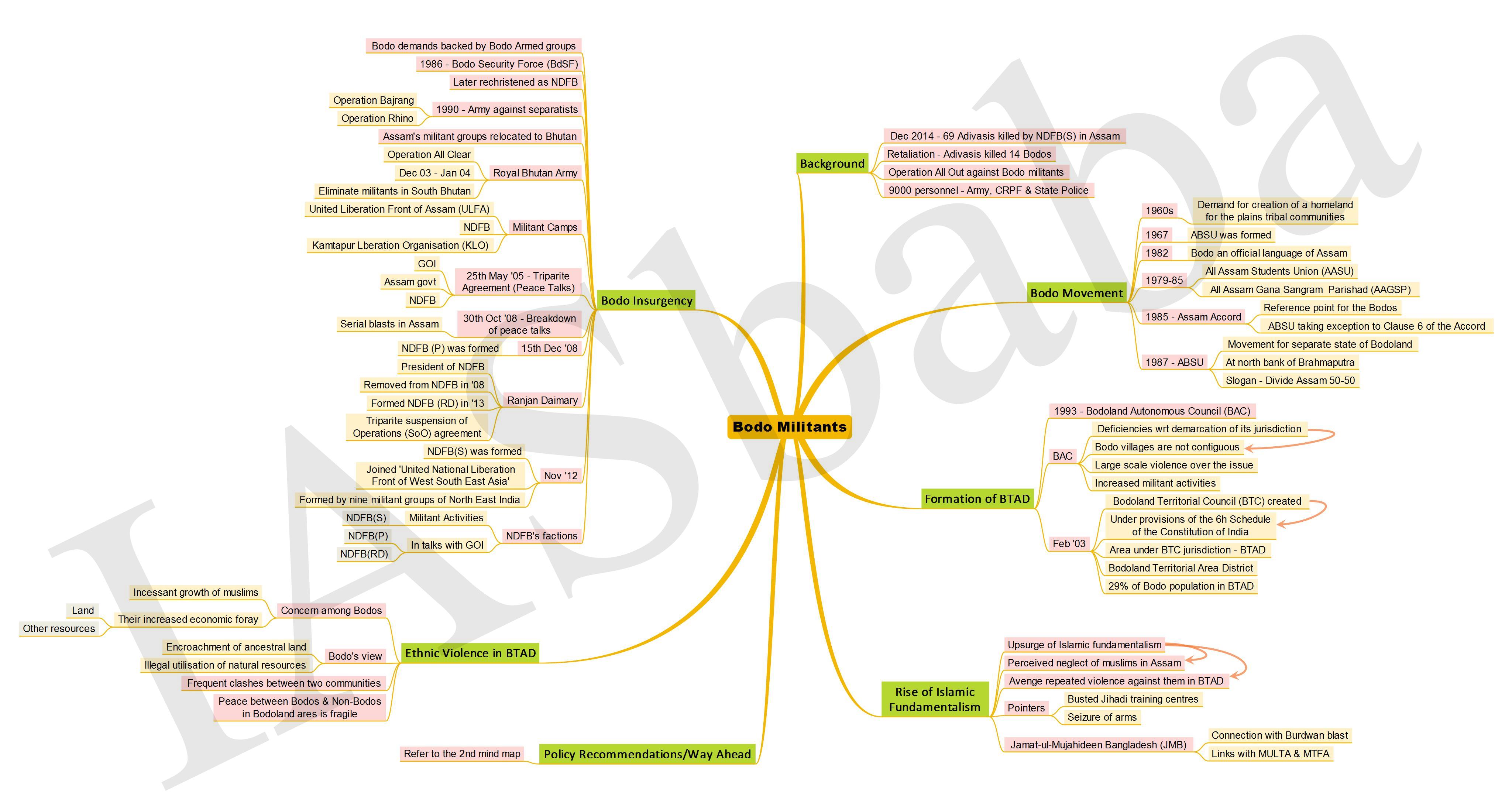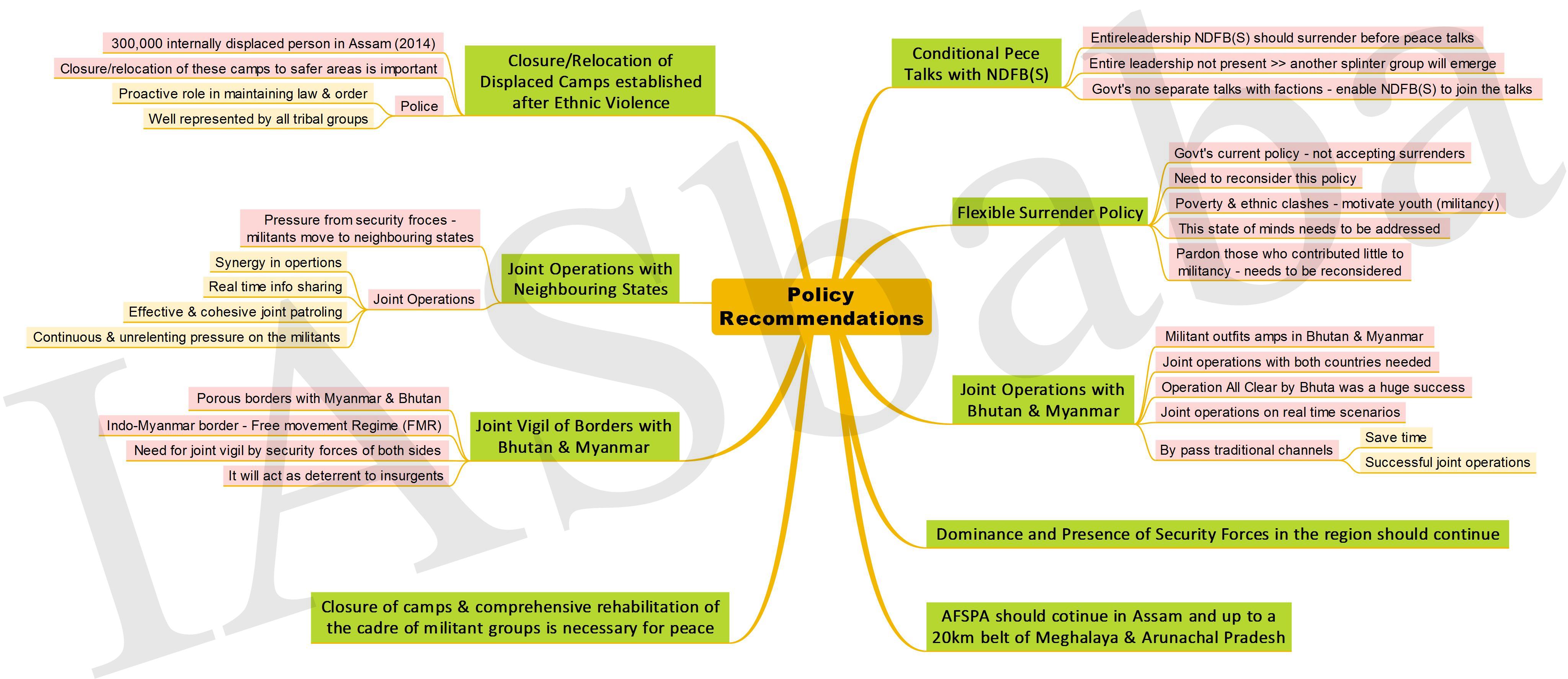IASbaba's Daily Current Affairs Analysis, IASbaba's Daily Current Affairs Feb 2016, National, UPSC
Archives
IASbaba’s Daily Current Affairs – 15th February, 2016
DEFENCE/SECURITY
TOPIC:
General studies 3:
- Security challenges and their management in border areas, linkage of organised crime with terrorism
General studies 2:
- India and its neighbourhood- relations
- Bilateral, regional and global groupings and agreements including India/ or affecting India’s interest
Maritime Security: India’s challenge of securing the seas
Background:
Three recent events underline India’s efforts to highlight its growing maritime interests and ambitions in order to secure them unilaterally and in partnership with others.
- The first was the quiet release of the Indian Maritime Security Strategy (IMSS) titled Ensuring Secure Seas.
- The second was the holding of the combined senior commanders’ conference, with top officers from all three services, on board INS Vikramaditya, the Indian Navy’s latest aircraft carrier and its largest platform.
- The last and most recent was India’s hosting of its second International Fleet Review (IFR) at Visakhapatnam in early February.
What is the current status of Indian Navy?
- India is now willing to provide “net maritime security” either by itself or in cooperation with other navies in its primary and secondary areas of interest, which now extend from the west coast of Africa to the south-east Indian Ocean, “including sea routes to the Pacific Ocean”.
- One instance of this cooperation was the IBSAMAR V exercise conducted with Brazilian and South African ships off the coast of Goa just after the IFR.
Sea Power in Peace and War
The term sea power is a much broader concept that entails at least four elements:
- Control of international trade and commerce;
- Usage and control of ocean resources;
- Operations of navies in war;
- Use of navies and maritime economic power as instruments of diplomacy, deterrence, and political influence in times of peace.
Unlike the concepts of land power or air power, which are generally defined only in military terms, sea power can never be quite separated from its geo-economic purposes.
What are the threats mentioned in IMSS-2015 ?
Traditional Threats:
- The principal threat would be from states with a history of aggression against India,e concerns vis-à-vis China’s growing role in the Indian Ocean.
- It cautions that even countries with divergent national interests can be significant trade partners today (China).
- Upon that it also mentions there may be divergent security perceptions with nations that may be traditional friends (read United States).
Non- Traditional Threats:
- Terrorism
- Piracy and organized crime
- Climate change
- Natural disasters
- Due to turmoil in West Asia, naval ships have been involved in the evacuation of Indian and other nationals from Libya and Yemen.
What are the recent tasks taken up by Navy in addressing Non-traditional threats?
- During the 2004 Indian Ocean tsunami, the Indian Navy has been increasingly involved in humanitarian assistance and disaster relief operations.
- Recently in 2014 when cyclone Hudhud ravaged Visakhapatnam and other parts of Andhra Pradesh Indian Navy played a vital role in disaster relief operations.
- The Indian Navy’s role in providing timely succour to Indonesia and Sri Lanka, despite our preoccupation with relief operations in Andaman and Nicobar, in Tsunami is well documented.
- Humanitarian and Disaster Relief capability of the Indian Navy was again evident during the recent cyclone
- In fact, providing a responsive and effective Humanitarian Assistance and Disaster Relief throughout the Indian Ocean Region remains a core focus area for the Indian Navy, considering that 70 per cent of the world’s natural disasters occur in the Indian Ocean Region.
What is the current status of India’s sea-based nuclear deterrence?
The primary objective of the nuclear-powered submarine armed with nuclear-tipped missiles is to convey “credibility, effectiveness and survivability” of India’s nuclear arsenal to its nuclear-armed adversaries.
What are the various maritime initiatives taken recently?
Project Mausam:
- Maritime Routes and Cultural Landscapes across the Indian Ocean.
- Transnational initiative meant to revive its ancient maritime routes and cultural linkages with countries in the region.
- Project focuses on the natural wind phenomenon, especially monsoon winds used by Indian sailors in ancient times for maritime trade, that has shaped interactions between countries and communities connected by the Indian Ocean.
- Project will seek to draw on its ancient linkages with countries in this region as it offers an alternative which could counter-balance the maritime silk route of China
Blue Chakra (from the Ashoka chakra on the Indian flag)
- Blue chakra or wheel in India’s national flag represents the potential of Blue Revolution or the Ocean Economy.
- The Blue Revolution, if realized in its entirety, has the potential to transform India in similar to that of Green revolution and White revolution.
- The Indian Ocean is critical to the future of the world.
- This Ocean bears two-thirds of the world’s oil shipments, one-third of its bulk cargo and half of its container traffic. Over three-fourths of its traffic goes to other regions of the world
- Cooperation amongst Island countries is vital for the exploration of full potential of Blue revolution.
SAGAR (Security and Growth for All in the Region)
- Ensuring peace, stability and prosperity is India in Indian Ocean region.
- Goal is to seek a climate of trust and transparency; respect for international maritime rules and norms by all countries; sensitivity to each other`s interests; peaceful resolution of maritime issues; and increase in maritime cooperation.
Way ahead:
- Today, the geo-strategic significance of India as a stabilising power in the IOR is globally accepted and there is a distinct realisation that India is destined to play a larger global role in the years ahead.
- Proper Cooperation, climate of trust and transparency is the need of the hour for peaceful resolution of maritime issues and also to realise full potential of Blue revolution.
Connecting the dots:
- Blue revolution is acting as a new found platform to increase maritime cooperation?. Comment.
- Is Project ‘Mausum’ an answer to China’s ‘Maritime Silk route’ Policy? Evaluate.
Related Articles:
India’s Military Prowess: Navies are for more than just fighting
Indian Navy: Centrality of Indian Ocean for India’s prosperity and security
Operationalising ‘Blue Diplomacy’
NATIONAL
TOPIC:
General Studies 1:
- Role of women and women’s organization – women empowerment
General studies 2:
- Welfare schemes for vulnerable sections of the population by the Centre and States and the performance of these schemes; mechanisms, laws, institutions and Bodies constituted for the protection and betterment of these vulnerable sections;
- Issues relating to development and management of Social Sector or Services relating to Health, Education, Human Resources.
Women Empowerment: Economic agency- An enabling factor for Women
- As societies become more equal and every individual’s productive capacity is valued and engaged, economies become more resilient. To build such a society, the key is inclusiveness—to make sure that no group is kept at the margins and subjected to exploitation.
- One particular group that deserves special attention, as it constitutes half the world’s population, is women. An economy cannot grow to its full potential if its women are not treated on par with men.
- When women are economically empowered, the entire civilization flourishes. And therefore, an economic agency becomes one of the most enabling elements to release women from oppression, violence and powerlessness.
Yet until now, a crucial knowledge gap has existed when we talk about the actual interventions that have been effective at the ground level and those that have collectively advanced women’s rights and economic opportunities.
Supreme Court Bench- The torchbearer of progressive attitudes towards women
In a directive given to the Chhattisgarh government, the Bench directed the State government to appoint a woman Excise Sub Inspector as Deputy Superintendent of Police after granting her relief in the upper age limit.
Richa Mishra & Chhattisgarh Police Executive (Gazetted) Service Recruitment and Promotion Rules, 2000
Richa Mishra’s name was not included in the list of successful candidates for the post as she had crossed the age limit stipulated for the same
Why: As per the Chhattisgarh Police Executive (Gazetted) Service Recruitment and Promotion Rules, 2000, the upper age limit for appointment to the post of Deputy Superintendent of Police is 25 years and Ms. Mishra had already crossed that age
Judges:
- Overruled this proposition
- As per Rule: age relaxation as per Rule 8 of the Rules, 2000 which states, “there shall be age relaxation of ten years for women candidates for direct appointment in all posts in the services under the State in addition to the upper age limit prescribed in any service rules or executive instructions”.
- Judge’s Statements—
- “It is to encourage women, hitherto known as weaker section, to become working women, by taking up different vocations, including public employment. It would naturally lead to empowerment of women, which is the need of the hour… Empowerment of women… is perceived as equipping them to be economically independent, self-reliant, with positive esteem to enable them to face any situation and they should be able to participate in the development activities.”
- “There is a bidirectional relationship between economic development and women’s empowerment, defined as improving the ability of women to access the constituents of development — in particular health, education, earning opportunities, rights, and political participation”
The Need—
To recognise the
- Vital role which women play in the economy
- Policy, data collection and programme design
To emphasise that
- Livelihood is a critical requirement for self-affirmation (enhance the outcomes of development it the self)
- Economic power within and outside the household makes a difference to gender relations (strengthening of the agency, freedom and intra-household power)
- Equality of opportunity allows women to make the choices that are best for them, their families and their communities
IASbaba’s Views:
- The message in the verdict not only allows Richa Mishra to get her posting but also acts as an advisory to all the Departments of States at all levels, to Ministries, to Niti Aayog and its State-level counterparts, as well as to research and policy forums about the importance of women in the economy and the suitable roadmap that needs to be sensitively absorbed and followed while taking decisions.
- More promotion of the cause of inclusion needs to take place and however, the progress must surely be celebrated but emphasizing the work still to be done to ensure economic empowerment for all should form a key priority area.
- Resulting from poor implementation of the laws, whether due to poor enforcement, poor design, or low capacity, the laws speaking against the legal realities should be done away with and, good mechanisms for implementing and adequate budgetary commitments for enforcing laws should be strictly put in place.
Connecting the Dots:
- ‘Women are less likely to borrow from a financial institution’, do you agree with the statement? Give reasons.
- Will establishing gender quotas to increase women’s representation at the highest levels of government and the private sector work? Discuss
Related Articles:
MUST READ
JNU: State overreach on the campus ?
War and possible peace in Syria
Related Articles:
West Asia: Saudi Arabia’s deadly gamble
Taking Off Contrary to official claims, Tejas is a winner
From Plate to Plough: On the farm front, make a bold move- The budget is an opportunity for government to address the simmering discontent and disillusion in rural India.
Sex determination: Answer this- If the government does not have the will to regulate 55,000 pre-natal diagnostic clinics, how will it track 29 million pregnancies annually?
Related Articles:
India’s Inverted Abortion Politics
Start at the bottom-The attempt to improve higher education must begin with primary schools.
Related Articles:
http://iasbaba.com/2015/08/iasbabas-daily-current-affairs-13th-august-2015/
http://iasbaba.com/2015/09/iasbabas-daily-current-affairs-12th-september-2015/
http://iasbaba.com/2015/08/iasbabas-daily-current-affairs-4th-august-2015/
http://iasbaba.com/2015/10/iasbabas-daily-current-affairs-16th-october-2015/
The trade agreements dilemma- Economists can’t explain why expanded trade has produced negative consequences for wages and employment
MIND MAPS
1. Institute for Defence Studies & Analysis
Bodo Militants















